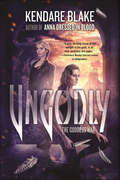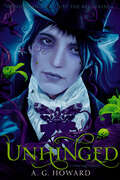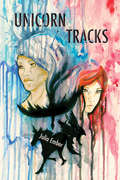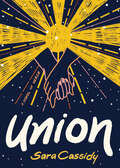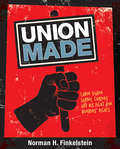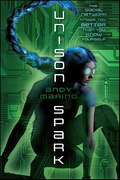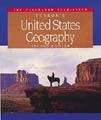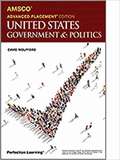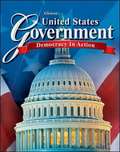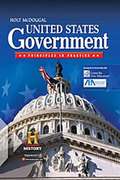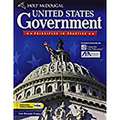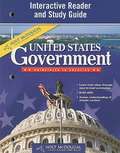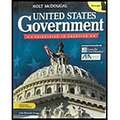- Table View
- List View
Ungodly: (antigoddess, Mortal Gods, Ungodly) (The Goddess War #3)
by Kendare BlakeAs ancient immortals are left reeling, a modern Athena and Hermes search the world for answers in Ungodly, the final Goddess War novel by Kendare Blake, the acclaimed author of Anna Dressed in Blood. For the Goddess of Wisdom, what Athena didn't know could fill a book. That's what Ares said.So she was wrong about some things. So the assault on Olympus left them beaten and scattered and possibly dead. So they have to fight the Fates themselves, who, it turns out, are the source of the gods' illness. And sure, Athena is stuck in the underworld, holding the body of the only hero she has ever loved. But Hermes is still topside, trying to power up Andie and Henry before he runs out of time and dies, or the Fates arrive to eat their faces.And Cassandra is up there somewhere too. On a quest for death. With the god of death.Just because things haven't gone exactly according to plan, it doesn't mean they've lost. They've only mostly lost. And there's a big difference.At the Publisher's request, this title is being sold without Digital Rights Management Software (DRM) applied.
Unhinged: A Splintered Novel (Splintered Series #Bk. 2)
by A. G. HowardWonderland causes real-world trouble for a teenage descendant of Alice in this romantic, dark fantasy sequel by the bestselling author of Splintered.Alyssa Gardner has been down the rabbit hole. She was crowned Queen of the Red Court and faced the bandersnatch. She saved the life of Jeb, the boy she loves, and escaped the machinations of the disturbingly appealing Morpheus. Now all she has to do is graduate high school.That would be easier without her mother, freshly released from an asylum, acting overly protective and suspicious. And it would be much simpler if the mysterious Morpheus didn’t show up for school one day to tempt her with another dangerous quest in the dark, challenging Wonderland—where she (partly) belongs.Could she leave Jeb and her parents behind again, for the sake of a man she knows has manipulated her before? Will her mother and Jeb trust her to do what’s right? Readers will swoon over the satisfying return to Howard’s bold, sensual reimagining of Carroll’s classic.“I really enjoyed the first book of this series, but Unhinged cranks the Wonderland experience up to 11. It’s just . . . WOW! The last few scenes dangle Alyssa’s next adventure with shockers enough that I found my jaw needing a bit of assistance in coming off the floor. Write quickly, A. G. Howard! I need that next book!”—USA Today“Howard excels in sensory and sensuous descriptions.” —Kirkus Reviews “As intense, dark, and weird as the first volume, this worthy sequel creates a parallel narrative that brings the action out of Wonderland and into Alyssa’s hometown.” —The Bulletin of The Center for Children’s Books“A dark beauty fills the novel's pages, which will mesmerize teens with a taste for magic, romance or suspense. Unhinged lays the groundwork for a third book where anything could happen—it is Wonderland, after all.” —Shelf Awareness
Unicorn Tracks
by Julia EmberWhen a vicious assault compels sixteen-year-old Mnemba to leave her village, she joins her cousin Tumelo as a tracker in his booming safari business. It doesn't take her long to become one of the best safari guides in Nazwimbe. Her work allows her to escape into a new world of wondrous creatures, and to avoid thinking about what happened at home. When Mr. Harving arrives with his daughter Kara to research unicorns, Tumelo assigns Mnemba to them as a guide. The attraction between Mnemba and Kara is almost instant, but Kara is engaged to be married when she returns home. Venturing into the savanna alone, they uncover a plot by a gang of poachers to enslave the unicorns, harnessing their supernatural strength to build a railway. They must save the creatures Kara loves while struggling not to succumb to forbidden love themselves.
Union
by Sara CassidyKey Selling Points A 15-year-old boy juggles work, sexual trauma and a new girlfriend in this novel in verse. The power of love to heal past wounds is the central theme. The author explores losing and doubting one's voice in an experimental narrative form. The novel is written almost entirely in single-syllable words, to reflect Tuck’s dissociative mental state. This author’s works have been on many award lists, including the Governor General’s Literary Award, BC & Yukon Book Prizes and Forest of Reading.
Union Made: Labor Leader Samuel Gompers and His Fight for Workers' Rights
by Norman FinkelsteinUnsung hero Samuel Gompers worked tirelessly to ensure that no American worker would go unheard or overlooked, dedicating his life to fighting for their rights. This comprehensive middle-grade biography provides an in-depth look at Gompers, the founding father of the American Federation of Labor. <P><P>Born in England, Samuel Gompers grew up watching his father roll cigars, and at 10 years old, started rolling them himself. After immigrating to the United States, Gompers soon discovered his vocation to fight for the American laborer in his personal work experience. His charismatic, outspoken personality soon landed him the role of speaking on behalf of his fellow workers. His participation in various unsuccessful unions and other failed ventures to enact labor changes led to his creation of the American Federation of Labor. Faced with strikes that turned violent, opposition from the government, and lies perpetrated by anti-unionizers, Gompers persevered, and lived to see various measures enacted to ensure safe work environments, workers' compensation, and other basic laborer rights.
Unison Spark
by Andy MarinoEveryone is obsessed with Unison, the social network that knows you better than you know yourself. Everyone who can afford it, that is. Living beneath the vast ceiling that separates Eastern Seaboard City into rich topside and poor sub-canopy zones, fifteen-year-old Mistletoe can only dream of logging in and has to make do with technological hand-me-downs.Worlds collide when Ambrose Truax, the privileged heir to the Unison empire, wanders into the dangerous sub-canopy streets and Mistletoe saves him from suspicious, uniformed men. They soon discover that they share eerily similar dreams, hinting at a significant past.Together, Ambrose and Mistletoe begin to unravel the mystery of their identities and learn that they're pawns in a bigger game: the Unison 3.0 upgrade, a whole new kind of Friendship.
United States Geography
by Fearon'SThis program introduces students to different regions of the United States, the physical and human features of the earth, and cultural topics of special interest that help students of all abilities appreciate American geography and cultures.
United States Government
by Ags SecondaryWhat could be more important than learning about government? United States citizens need to stay informed, know their rights, and be involved. It's basic to a democratic system. The updated United States Government goes beyond planting the seed for citizen participation. This comprehensive text explores the origins and development of our government, the history of political parties, and branches of government.
United States Government & Politics, AMSCO® Advanced Placement® Edition
by David WolffordNIMAC-sourced textbook
United States Government (HMH Social Studies United States Government Series #Student Edition 2018)
by Houghton Mifflin Harcourt StaffThe U.S. Constitution outlines six fundamental principles that have guided American government for more than 200 years. The Framers of the Constitution established these six principles-popular sovereignty, limited government, separation of powers, checks and balances, judicial review, and federalism-as the basis of our national government.
United States Government and Civics
by Donald A. Ritchie Richard C. Remy Lee Arbetman Inc. Street Law Cathy RuffingNIMAC-sourced textbook
United States Government: Democracy In Action, Student Edition
by McGraw-Hill-Glencoe StaffThis program provides a "behind-the-scenes" look at Washington never before available in any government program.
United States Government: Democracy in Action
by McGraw-Hill-Glencoe StaffThis program provides a "behind-the-scenes" look at Washington never before available in any government program.
United States Government: Interactive Reader And Study Guide
by Houghton Mifflin HarcourtNIMAC-sourced textbook
United States Government: Our Democracy
by Donald A. Ritchie Richard C. Remy Lee ArbetmanNIMAC-sourced textbook
United States Government: Our Democracy (Government Networks Ser.)
by Donald A. Ritchie Richard C. Remy Lee ArbetmanNIMAC-sourced textbook
United States Government: Principles in Practice
by Luis Ricardo Fraga Charles N. Quigley John HaleNIMAC-sourced textbook
United States Government: Principles in Practice
by Luis Ricardo FragaTextbook about the United States government's principles and practices.
United States Government: Principles in Practice (Interactive Reader and Study Guide with Answer Key)
by Holt Mcdougal Publishing StaffInteractive Reader and Study Guide with Answer Key
United States Government: Principles in Practice (Pennsylvania Edition)
by Luis Ricardo FragaHolt McDougal United States Government: Principles in Practice will make your study of U.S. government an enjoyable, meaningful experience.
United States Government: Principles in Practice, Georgia
by Luis Ricardo Fraga Charles N. Quigley John HaleNIMAC-sourced textbook
